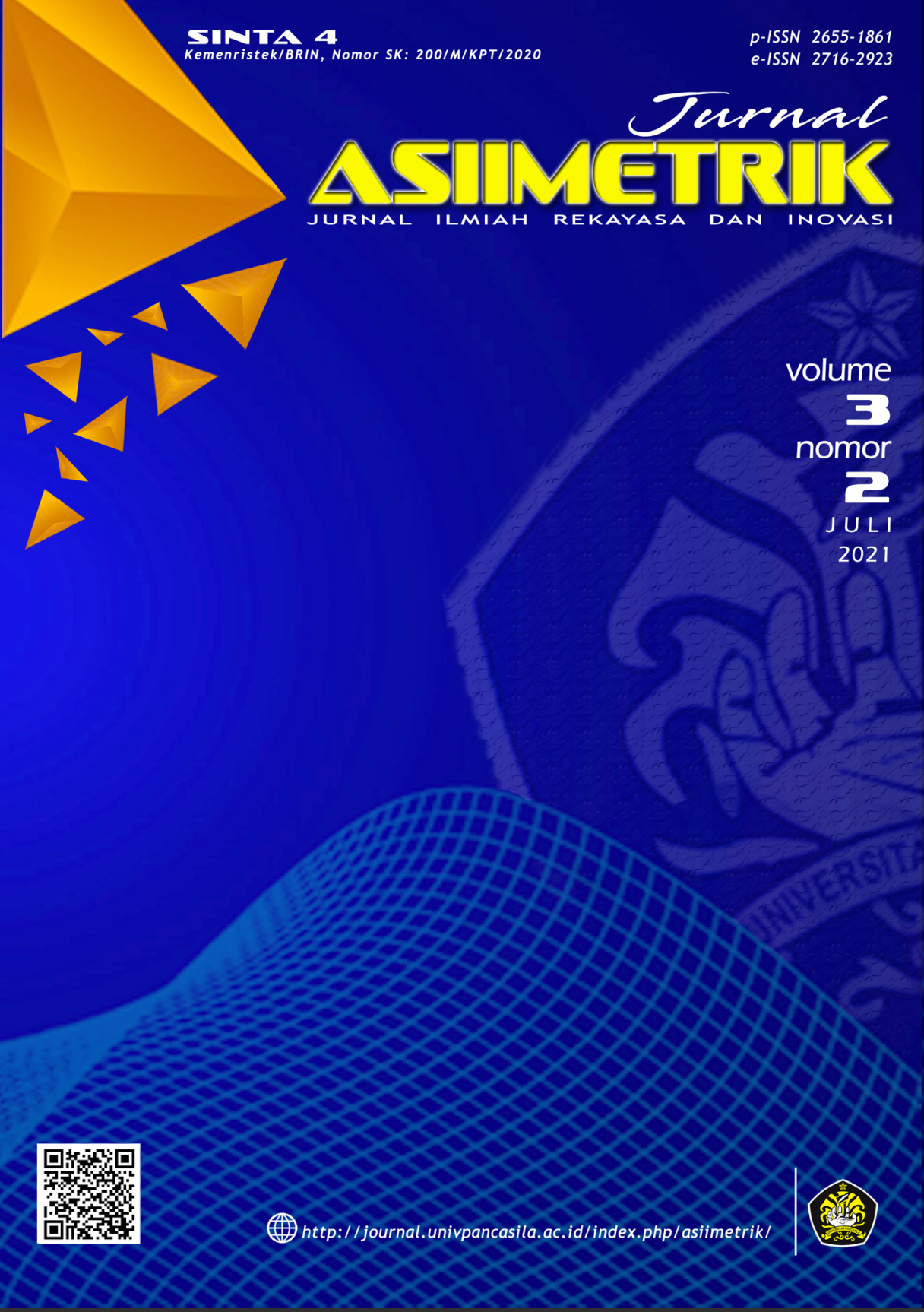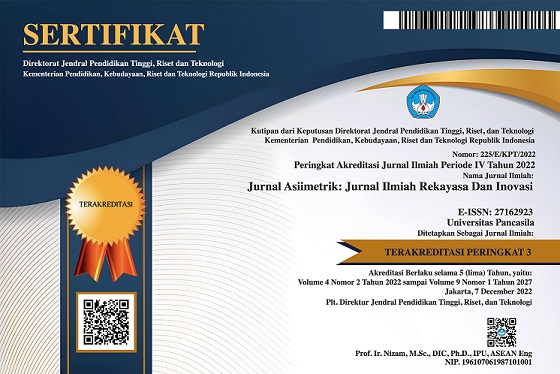Analisis Perbandingan Sistem Kinerja Motor Penggerak Pada Mobil Listrik Kapasitas 75 kWh
Abstract views: 1423 | pdf downloads: 2246
Abstract
Population growth and the increasingly rapid industrial technology to 4.0. So that there was an electric car with an electric motor as the driving force. At first, electric cars used a DC motor system. But the triumph of this DC motor is not long in coming because problems arise when compared to induction motors such as complicated maintenance, much higher prices, and heavier weight than induction motors. In an induction motor, the control is believed to be easier than a DC motor. The induction motor is believed to make it possible to drive an electric car. The advantage of using this induction motor is that it has durability, reliability, if exposed to interference, it remains strong, easy to maintain, and the ability to operate in extreme environments. These advantages can replace the use of DC motors. Where the induction motor receives power from a rechargeable battery, so that the analysis of data from an induction motor for an electric car with the calculation of the electric motor rotation is 1,500 rpm, the motor power itself is 375 kW, the maximum and minimum torque generated is 582 Nm and 271 , 2 Nm, with a battery life of 189.3 hours. The resulting acceleration to reach speeds of 0-100 km / h only takes 5 seconds.
Downloads
References
Aditya, A.W., Ihsan, I., Utomo, R.M. dan Hilmansyah, H., 2019. Evaluasi Motor Listrik Sebagai Penggerak Mobil Listrik. JRST (Jurnal Riset Sains dan Teknologi), 3(2), hal.55-59.
Bukhari, A.A.S., Ali, S., Shaikh, S.H., Soomro, T.A., Lin, Z. dan Cao, W., 2018, March. Design of a high speed 18/12 switched reluctance motor drive with an asymmetrical bridge converter for electric vehicles. In 2018 International Conference on Computing, Mathematics and Engineering Technologies (iCoMET), hal. 1-6.
Hashemnia, N. and Asaei, B., 2008, September. Comparative study of using different electric motors in the electric vehicles. In 2008 18th International Conference on Electrical Machines, hal. 1-5.
Ingle, S. dan Phute, M. 2016. Tesla Autopilot : Semi Autonomous Driving, an Uptick for Future Autonomy, International Research Journal of Engineering and Technology, 3(9), pp. 369–372.
Manual Book Tesla, O. S. 2018. Model X O Wner S Manual’.
Mehazzem, F., Nemmour, A. L. dan Reama, A. 2017. Real time implementation of backstepping-multiscalar control to induction motor fed by voltage source inverter, International Journal of Hydrogen Energy, 42(28), pp. 17965–17975.
Efendi, A., 2020. Rancang Bangun Mobil Listrik Sula Politeknik Negeri Subang. Jurnal Pendidikan Teknologi dan Kejuruan, 17(1), hal.75-84.
Sidabutar, V.T.P., 2020. Kajian pengembangan kendaraan listrik di Indonesia: prospek dan hambatannya. Jurnal Paradigma Ekonomika, 15(1), hal. 21-38.
Purwanto, E. dkk., 2011. Pengembangan Model Motor Induksi sebagai Penggerak Mobil Listrik dengan Menggunakan Metode Vektor Kontrol, Jurnal Ilmiah Elite Elektro, 2(2), hal. 67–72.
Sepdian, S. 2020. Metode Metode Kontrol Pada Mobil Listrik, Jurnal Surya Teknika, 6(1), hal. 8–12.
Siburian, B.C. dan Bahriun, T.A., 2015. 'Perancangan Alat Pengisi Baterai Lead Acid Berbasis Mikrokontroler ATMEGA 8535'. Singuda ENSIKOM, 13(55), hal.42-48.
Thowil Afif, M. dan Ayu Putri Pratiwi, I. 2015 Analisis Perbandingan Baterai Lithium-Ion, Lithium-Polymer, Lead Acid dan Nickel-Metal Hydride pada Penggunaan Mobil Listrik - Review, Jurnal Rekayasa Mesin, 6(2), hal. 95–99.
Zeraoulia, M., Benbouzid, M. E. H. dan Diallo, D. 2006. Electric motor drive selection issues for HEV propulsion systems: A comparative study, IEEE Transactions on Vehicular Technology, 55(6), hal. 1756–1764.


























